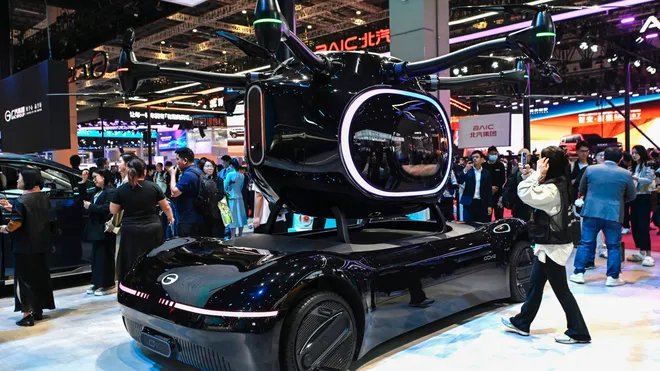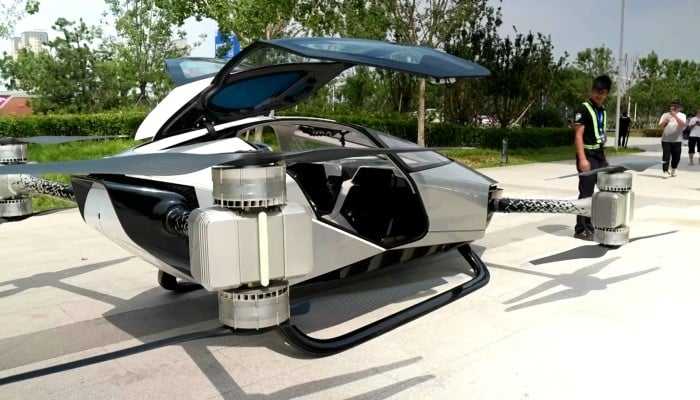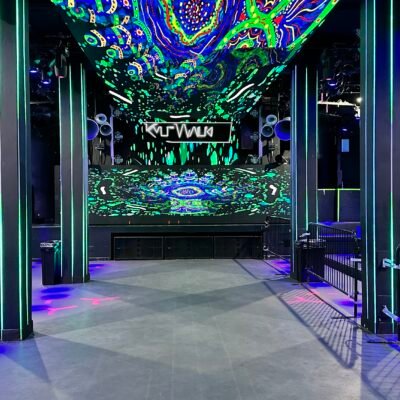Former U.S. President Donald Trump is back in the spotlight—not just politically, but technologically. In a bold move to boost futuristic innovation, Trump has unveiled plans to supercharge the development of flying cars and supersonic flights, signaling a dramatic shift in how America might travel in the coming decades.
In a recent campaign rally and follow-up policy document, Trump outlined a vision to make the United States a global leader in next-generation transportation. The focus? Advanced Air Mobility (AAM) technologies like vertical take-off and landing vehicles (VTOLs), ultra-fast supersonic jets, and sky taxis.
Flying Cars: Not Just Science Fiction Anymore
Flying cars are no longer a fantasy idea seen only in Hollywood. Trump’s plan includes government support to fast-track their development, suggesting that these vehicles could reduce urban traffic, cut down travel times, and even transform emergency services.

According to Trump, “America must lead in the air, as we once did in space.” This echoes sentiments of the 1960s space race, but this time, the destination is the sky above our cities.
Several private companies are already building prototypes. Startups like Joby Aviation and Archer Aviation have received FAA approvals to test their electric flying vehicles. With Trump’s new proposal, they may now get federal backing in the form of grants, tax breaks, or public-private partnerships.
Learn more about Joby Aviation’s progress here.
Supersonic Flights: Faster Than the Speed of Sound
Another key area of Trump’s new-age tech push is the return of supersonic commercial flights. The Concorde may have retired in 2003, but today’s aerospace companies are gearing up to bring back ultra-fast air travel.
Trump’s plan supports companies like Boom Supersonic, which aims to build planes that travel twice as fast as current jets, cutting a New York-to-London flight to just 3.5 hours.
Read about Boom Supersonic’s vision here.
Trump’s policy framework calls for reducing regulatory barriers and accelerating FAA certification processes so these companies can test and launch faster. He also proposes creating “Supersonic Corridors” over the U.S. for flight testing.
A Boost for American Innovation and Jobs
Trump emphasized that these tech advances could do more than change travel—they could create thousands of new jobs, from manufacturing and piloting to maintenance and software engineering.
His administration, if re-elected, would launch a “Future Skies Task Force”, which will coordinate with the Department of Transportation, FAA, NASA, and private firms to build the necessary infrastructure and legal framework for these innovations.
According to Trump:
“We must leapfrog the rest of the world in transportation technology. Flying cars, air taxis, and supersonic planes should be built right here in the USA.”
Potential Challenges: Infrastructure, Safety, and Public Opinion
While the vision is ambitious, many experts caution that several hurdles remain. Urban infrastructure is not ready for flying vehicles, and public airspace is already crowded with drones, planes, and helicopters.
Safety concerns are another issue. How do we make sure that flying cars don’t crash mid-air? What happens if a battery fails mid-flight?
Trump’s plan does mention the development of “smart air traffic systems” powered by AI to monitor and guide these vehicles. It also highlights pilot training programs, emergency response protocols, and airspace zoning laws as part of the policy roadmap.
Global Competition: Can the U.S. Take the Lead?
China, the UAE, and Germany have already tested versions of flying taxis and supersonic aircraft. Trump’s initiative is also seen as a move to prevent America from falling behind in this global tech race.

The European Union and UAE are working with companies like Volocopter and EHang to launch flying taxis before 2030.
See Volocopter’s latest demo in Dubai.
If the U.S. wants to stay ahead, experts say it must invest now. Trump’s proposal aims to do just that by building airports for flying cars, funding supersonic aircraft manufacturing, and incentivizing private innovation.
Public Reaction and Political Implications
Public reactions to Trump’s announcement have been mixed. Supporters see this as a return to bold, space-age innovation, while critics worry that the focus on flashy tech may divert attention from pressing issues like infrastructure repair, education, and healthcare.
However, in the tech world, the proposal is already gaining traction. Entrepreneurs, investors, and engineers see it as a potential game-changer for the transportation sector.
The Bottom Line: A New Frontier in Motion
Trump’s push for flying cars and supersonic jets may sound futuristic, but it’s a conversation the world is already having. Whether it’s feasible by 2030 or takes another decade, one thing is clear—America’s skies are set for change.
With strong government support, real innovation, and responsible safety measures, the future may very well include air taxis in your city and three-hour flights to Europe.
Also Read – Mercedes-Benz Recalls GLC 300 Over Shocking Headlight Malfunction






